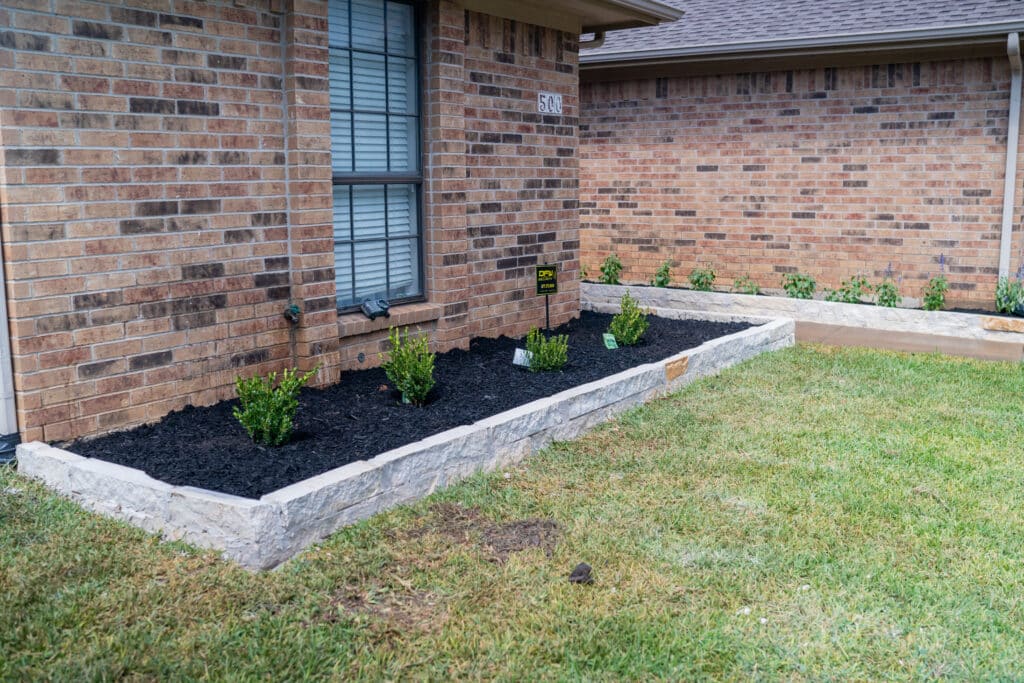How to Blend Flowerbeds with Hardscaping for a Cohesive Landscape
Creating a landscape that feels natural, balanced, and welcoming doesn’t just happen. It takes thoughtful planning to blend softscape elements like flowerbeds with hardscape features such as stone paths, patios, or retaining walls. If you live in Colleyville, TX, where yards range from upscale suburban to rustic Texas charm, combining flowers and hardscaping the right way can turn your outdoor space into something exceptional.

Let’s break down how to successfully blend flowerbeds with hardscaping to create a beautiful and functional outdoor environment.
Why Combining Flowerbeds and Hardscaping Works
Flowerbeds bring color, texture, and seasonal life to a yard. Hardscaping adds structure, functionality, and permanent appeal. When they work together, you get a landscape that is both practical and inviting. The contrast between natural plantings and built features creates visual interest and harmony.
This mix is especially effective in areas like Colleyville, where homeowners want outdoor spaces that can both entertain and relax, while still looking polished year-round.
Step 1: Start with a Unified Plan
Before planting anything or laying stone, think about how all parts of your yard interact. Consider:
- How much sun does each area get
- Drainage and slope
- How do you want to use the space (entertaining, gardening, relaxing)
- Views from inside your home
Map out zones for flowerbeds, patios, walkways, and focal points. This makes sure your design flows naturally. A good rule is to use flowerbeds to soften and border hardscape features, not to compete with them.
Step 2: Use Matching or Complementary Materials
Choose stone, brick, or concrete in shades that work well with the colors in your flowerbeds. If your plants have warm tones like reds and oranges, consider earth-toned stone. For cooler flower palettes, grays and blues in your hardscape will help everything feel tied together.
Even better: repeat those materials in different spots. For example, use the same flagstone on your patio and as edging around your flowerbeds.
Step 3: Frame Hardscaping with Plants
One of the easiest ways to blend flowerbeds and hardscaping is to plant along the edges of patios, paths, and walls. Here’s how:
- Patios: Add low-growing border plants like lavender, creeping thyme, or dwarf mondo grass.
- Walkways: Use flowering groundcovers like lantana or salvia to trail slightly over the edge of the path.
- Retaining walls: Soften their appearance with cascading plants like trailing rosemary or ivy.
These touches keep hard surfaces from looking too harsh or artificial.
Step 4: Build Around Focal Points
Create visual stops throughout the yard that bring hard and soft elements together. For example:
- A large urn or planter on a stone pedestal surrounded by blooming annuals
- A bench framed by flowering shrubs and pavers
- A fire pit with nearby flowerbeds for color and softness
These points make your space feel intentional and layered.
Step 5: Use Raised Flowerbeds for Dimension
Adding height to your plantings brings your landscape to life. Raised beds made from stone, brick, or concrete blocks blend naturally with patios or retaining walls.
Plus, they’re practical. Raised beds improve drainage, are easier to weed, and let you control the soil better than planting directly into Texas clay. This is especially helpful for flowers that don’t thrive in heavy soil.
Step 6: Stick to a Cohesive Color Palette
Pick a few main flower colors and repeat them throughout your flowerbeds near hardscaping. This ties everything together visually.
A good color strategy:
- Use two main colors (for example, yellow and purple)
- Add a third neutral or filler (like white flowers or silver foliage)
Repeat these color combinations near every major hardscape area to help the eye move easily through the yard.
Step 7: Don’t Forget Lighting
Hardscape lighting isn’t just practical; it can highlight the beauty of your flowerbeds at night. Use:
- Path lights along walkways
- Spotlights for large planters or feature plants
- Wall lights built into retaining walls
Soft lighting helps both flowers and stonework shine after dark.
Step 8: Think About Seasons
Not all plants bloom at the same time. Plan your flowerbeds to offer color across all seasons. In North Texas, that means:
- Spring: Tulips, daffodils, and salvia
- Summer: Coneflowers, black-eyed Susans, lantana
- Fall: Mums, asters, ornamental grasses
- Winter: Evergreen shrubs, pansies, dusty miller
If your hardscaping stays the same all year, your flowers should pick up the slack with seasonal color and energy.
Step 9: Use Edging to Define Transitions
Installing edging between flowerbeds and hardscaping helps define spaces and keeps soil and mulch where they belong. You can use:
- Stone borders that match your patio
- Metal or composite edging that disappears visually
- Low brick walls for a formal look
Good edging protects both your hardscape and your flowerbeds while adding clean lines to the design.
Step 10: Keep It Low Maintenance
The best designs are ones you can enjoy without working overtime. When blending hardscape and flowerbeds, aim for:
- Drought-tolerant plants (especially important in Colleyville summers)
- Mulch to retain moisture and reduce weeds
- Automatic irrigation zones for flowerbeds
Texas A&M AgriLife Extension offers detailed planting tips and low-water-use plant lists perfect for the area.
Bring It All Together
Creating a cohesive landscape takes more than just dropping in a few flowers or laying a stone path. It’s about designing with intention so that every part of your yard feels like it belongs. By choosing the right materials, planning for color, using elevation, and tying everything together with clean transitions and lighting, your yard can look amazing without feeling overdone.If you’re in Colleyville, TX and ready to take your landscape to the next level, Buzz Cutters is here to help. Our team specializes in custom landscaping that brings beauty and balance to every yard.
Call Buzz Cutters today at +1 (817) 888 6535 to schedule your landscape consultation.




